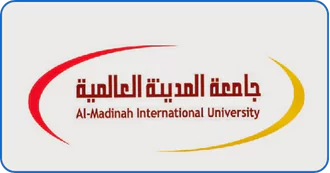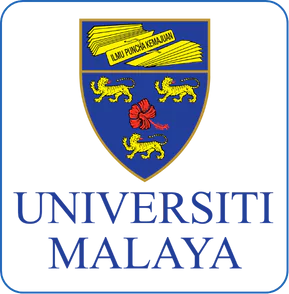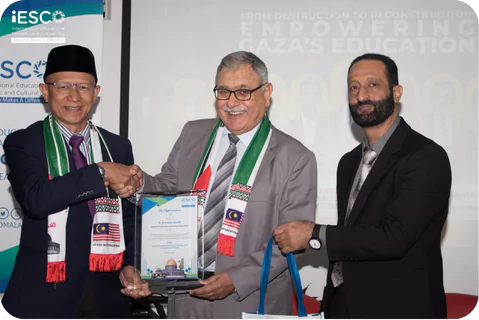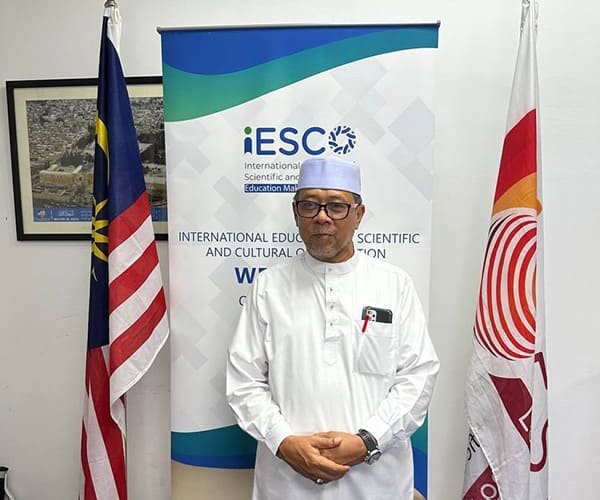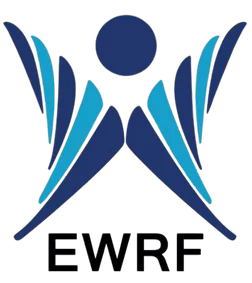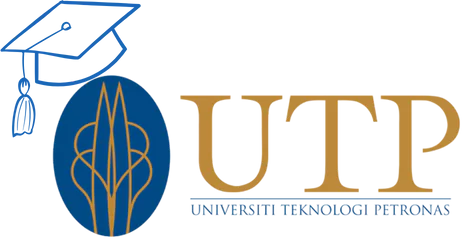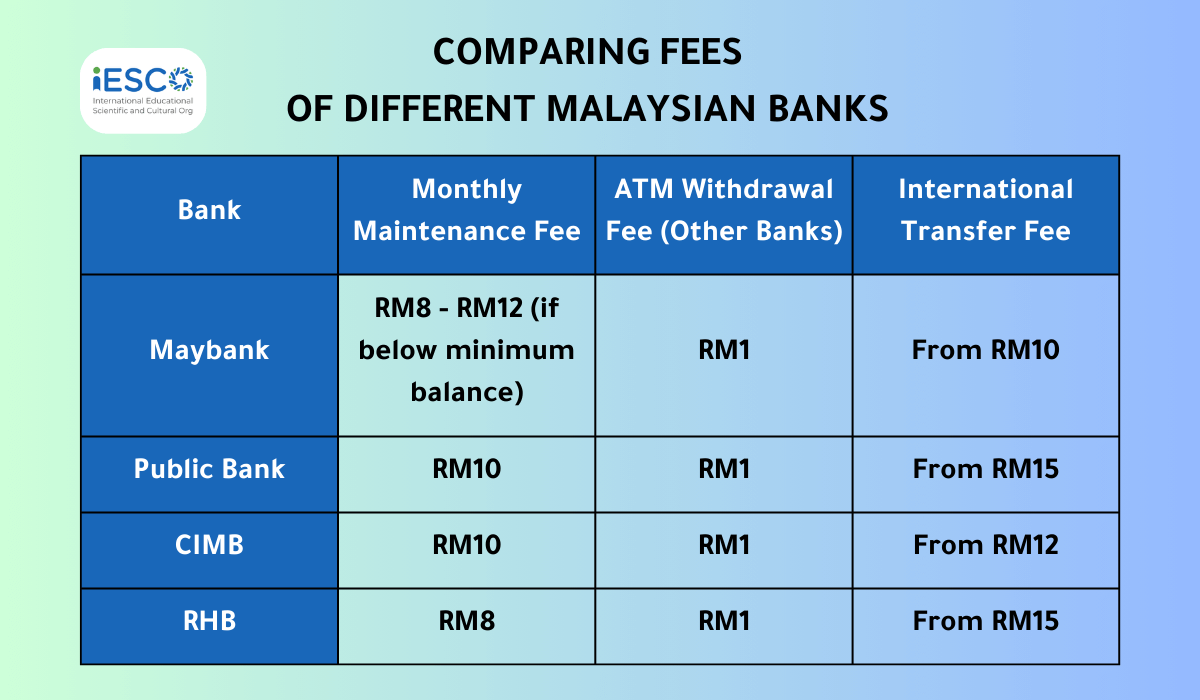Requirements for a Malaysia Student Visa (Student Visa) | 2025
Malaysia has become a magnet for students chasing quality education. If you’ve been with us on this journey, you already know about the costs of studying in Malaysia, best universities to join, how to open a bank account, can you work while study or not, and how to pick the right major. Now, it’s time to tackle the next crucial step: getting your Malaysia Student Visa. In this article, we’ll break down everything you need to know to turn your dreams of studying in Malaysia into reality.
Here, you will find detailed step-by-step instructions on how to obtain the Malaysia student visa and renew it easily and smoothly. We are committed to offering you up-to-date and reliable 2025 information based on official docs and experience.
What are the Requirements for a Malaysia Student Visa?
A student must meet a set of essential requirements established by the Malaysian government to obtain a student visa and ensure the acceptance of the application.
- You must obtain an official acceptance letter from one of the recognized universities or educational institutions in Malaysia. The Malaysian Ministry of Higher Education relies on the Education Malaysia Global Services (EMGS) system to determine which institutions are eligible to host international students.
- Students need to provide financial evidence showing that they can cover the cost of their studies and living expenses in Malaysia. The Malaysian authorities require a bank statement showing sufficient funds or a financial guarantee from a sponsor. Living expenses for a student are estimated to be around 10,000 to 12,000 Malaysian Ringgit (MYR) per year.
- Applicants must undergo medical examinations before and after they arrive in Malaysia. Examinations must show they are free from infectious diseases.
- You must have a passport valid for at least 18 months from the date of applying for the visa. The authorities emphasize this requirement to ensure that the student can stay in Malaysia throughout the study period without frequently renewing the visa.
- Students must provide their academic records, such as school or university certificates, proving their eligibility for the chosen study program. These documents help verify the student’s academic background and match it with the program’s requirements.
- If the program is in English, students have to provide a certificate proving their proficiency in the English language. Most Malaysian universities require tests such as IELTS or TOEFL, especially for programs taught in English. The score you need to achieve may vary depending on the study program and the university.
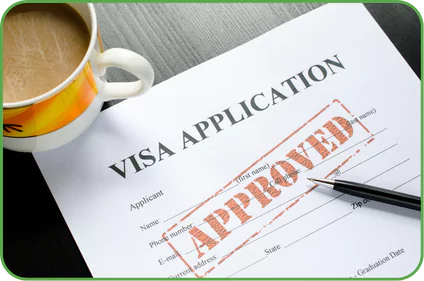
Steps to Obtain a Student Visa for Studying in Malaysia
Securing a student visa might seem daunting, but it doesn’t have to be. We’re here to guide you through each step with clarity and ease. From preparing your documents to submitting your application, we’ll explain every step practically, offering real examples so that the process is straightforward and stress-free.
1. Obtaining the Approval Letter (Acceptance Letter) from the Educational Institution
Research and apply to Institutions starting by researching recognized Malaysian universities. Choose a suitable program and apply online through the university’s website.
The documents required for applying vary depending on the university but generally include:
- Copies of previous academic certificates (e.g., diplomas, transcripts).
- Proof of English language proficiency, such as IELTS or TOEFL certificates, if the program is in English.
- A valid passport.
- Letters of academic or professional recommendation, depending on the program.
- After submitting your application, the university will review your eligibility for the academic program. If accepted, you will receive an official acceptance letter. This letter must come from an institution accredited by the Malaysian government and is essential for the student visa application.
It is crucial to follow up on your application and ensure all documents are submitted correctly. Regular follow-ups will help avoid delays in processing and ensure your process move forward smoothly.
2. Applying for the Visa Approval Letter (VAL)
After obtaining the acceptance letter from the university, the next step is applying for the Visa Approval Letter (VAL). This letter is issued by the Malaysian Ministry of Education through the Education Malaysia Global Services (EMGS) system and is crucial for completing your student visa application.
Steps to Apply for the VAL
- Register on the EMGS Platform: Begin by creating an account on the EMGS platform. This account will give you access to your visa applications and let you track their status.
- Submit the Required Documents: Upload the necessary documents on the platform, including:
- Acceptance Letter from the University: This letter must be from an institution that has an accreditation from the Malaysian government.
- Passport: Ensure your passport is valid for at least 18 months.
- Recent Passport-Sized Photos: These should be taken recently, with a white background.
- Academic Documents: Copies of your educational certificates, such as high school or bachelor’s degree.
- Pay the Fees: Once you have submitted the documents, you must pay the applicable fees via the EMGS platform. The fees can range from between MYR 1,060 (around $250) and MYR 1,737 (around $380) depending on the institution, and country of origin.
- Application Review: After payment, your application will be reviewed by EMGS. If there are any errors or missing documents, you will be notified through the platform so that corrections can be made.
- Receive the Visa Approval Letter (VAL): Once your application has been reviewed and all conditions have been met, you will receive the VAL. This letter will be sent to your email, and you will need to present it to the Malaysian embassy in your country to finalize the Single Entry Visa (SEV) for students.
Important Notes
- The review process and issuance of the VAL can take between 14 to 30 days, depending on the accuracy of the information and the speed of document processing.
- It is essential to submit all required documents correctly to avoid any delays in the issuance of the VAL.
- These steps are designed to streamline your visa application process and make your journey to study in Malaysia as straightforward as possible.
3. Medical Examination for Obtaining Your Student Pass
The medical examination is an essential step in obtaining a student visa to study in Malaysia. This examination aims to ensure that the student is free from infectious diseases that might pose a threat to public health in Malaysia.
All international students must complete this medical check-up as part of the requirements for obtaining the Visa Approval Letter (VAL) and finalizing visa procedures. Here are the key details:

A. Pre-Departure Medical Examination
Before traveling to Malaysia, students must undergo a medical examination at an approved medical center in their home country. This examination typically includes:
- Blood Tests: To check for infectious diseases like HIV (Human Immunodeficiency Virus) or tuberculosis (TB).
- Chest X-ray: To assess lung health.
- The medical report must be translated into English, and if the examination is conducted at a non-EMGS-approved center, full documentation must be provided upon arrival in Malaysia.
- Depending on the student’s country, the examination may include other diseases, such as checks for prevalent epidemics in their region, which is often the case for students from countries like Sudan and other parts of Africa.
B. Submitting Results via EMGS Platform
Once the medical examination is complete, the results are uploaded to the EMGS platform as part of the visa application process. If the examination is conducted at an approved center, the results are automatically uploaded to the system, simplifying the review process.
C. Medical Examination Upon Arrival in Malaysia
- Upon arrival in Malaysia, students are required to undergo another medical examination at an approved medical center within the country, in addition to the initial examination done in their home country. This examination is similar to the pre-departure check and involves tests to ensure the student is free of any contagious diseases. It is part of the process for obtaining a temporary residency permit.
- It is recommended that the student undergoes the medical check at an EMGS-approved center to ensure easy acceptance of the results.
- If the student is arriving from a country classified as high-risk for yellow fever, they must obtain a yellow fever vaccination and provide a vaccination certificate upon arrival.
4. Applying for the Student Visa at the Malaysian Embassy
After receiving the Visa Approval Letter (VAL) from Education Malaysia Global Services (EMGS), the next and final step in the student visa application process is to visit the Malaysian Embassy in your home country to officially obtain the student visa. Below is a detailed guide on the steps required:
A. Prepare the Required Documents
Make sure you have all the necessary documents ready before visiting the embassy. These documents include:
- Visa Approval Letter (VAL) issued by EMGS.
- Valid Passport with a validity of at least 18 months from the date of application.
- Additional Documents: The embassy may ask for extra documents like medical
- insurance proof or evidence of financial capacity.
- Medical Examination Certificate from an approved medical center.
B. Submitting Your Application at the Embassy
Once all the documents are prepared, the student must visit the Malaysian Embassy in their country in person to submit the application. The embassy officials will review the application and documents to ensure everything meets Malaysia’s immigration requirements.
C. Pay the Visa Fee
At the embassy, you will need to pay an additional fee to obtain the student visa. The visa fee depends on your nationality and the type of visa for which you are applying. This fee may vary from country to country.
D. Collect Your Visa
After the application is reviewed and approved, the embassy will issue the student visa, allowing you to enter Malaysia. Make sure to collect your visa before traveling and verify all the details mentioned on the visa document to ensure they are accurate.
5. Obtaining the Visa Sticker in Malaysia
After completing all steps related to obtaining the Visa Approval Letter (VAL) and passing the medical examination, the final step is acquiring the visa sticker on your passport. This step officially grants you the visa required to stay in Malaysia as an international student. Here is a detailed breakdown of the necessary steps:
A. Applying at the Malaysian Embassy
Once you have received the Visa Approval Letter (VAL), you need to visit the Malaysian Embassy or the nearest consulate in your home country to apply for the visa sticker.
Documents You Need To Provide:
- VAL (Visa Approval Letter): The official approval letter you received from EMGS.
- Passport: Ensure your passport is valid for at least 18 months.
- Medical Examination Certificate: Proof that you are free from any contagious diseases.
- Passport-Sized Photos: Ensure they meet the required standards.
- Travel Ticket: The embassy may ask for a flight ticket to verify your intention to travel to Malaysia.
- Proof of Financial Capacity: You must show evidence that you have enough financial resources to support yourself during your stay in Malaysia.

B. Paying the Visa Fees
Visa fees vary depending on your nationality. It is recommended to contact the Malaysian embassy to find out the exact fees applicable for your specific situation. You may pay these fees in cash or through other approved methods specified by the embassy.
C. Processing and Receiving the Visa Sticker
After submitting your application and all the required documents, the embassy will process your request. Once your application is approved, you will receive the visa sticker, which will be affixed to your passport. This visa allows you to enter and stay in Malaysia as an international student for the duration of your academic program.
6. Traveling to Malaysia
Once you have obtained your student visa, you are ready to travel to Malaysia to begin your studies. Upon arrival at Kuala Lumpur International Airport or any other point of entry, you will need to present specific documents to the customs and immigration authorities. These documents include:
- Passport with Visa Sticker: Make sure your passport contains the official visa sticker that allows you entry as a student.
- Visa Approval Letter (VAL): This is the letter you received from the Malaysian authorities.
- Medical Examination Certificate: This certificate should confirm that you are free from contagious diseases.
Upon Arrival:
A. Immigration Procedures
Once you present the required documents at the immigration checkpoint, you will go through the usual entry procedures. The authorities will stamp your entry visa into your passport, officially allowing you to enter Malaysia.
B. Undergoing the Final Medical Examination
Within seven days of your arrival in Malaysia, you are required to complete a final medical examination at an accredited medical center within the country. This examination is mandatory and ensures that you are in good health before your student status is confirmed.
The successful completion of this medical examination is essential to complete the application for your i-Kad, which is your student residence permit in Malaysia. The i-Kad is an important ID card that signifies your legal residence status as a student in the country.
Renewing Your Malaysia Student Visa: What You Need to Know
If you’re currently studying in Malaysia and need to renew your student visa to continue your education, it’s crucial to follow the required steps and meet all the necessary requirements to maintain your legal stay in the country. Below is a detailed guide on how to renew your student visa in Malaysia step by step.
1. When Should You Start the Renewal Process?
The Education Malaysia Global Services (EMGS) advises students to begin the renewal process at least three months before their current visa expires. This timeline gives you ample time to gather all the required documents and complete the mandatory medical examination without unnecessary stress or delays.
2. Basic Requirements for Renewing a Student Visa
To renew your student visa, you need to meet certain requirements and submit specific documents:
- Valid Passport: Your passport must be valid for at least 12 months from the date of renewal.
- Academic Progress Report: You must have a satisfactory academic record, which includes passing your courses with an acceptable grade. Generally, the authorities require a class attendance rate of over 80%.
- New Medical Examination: Just like when you initially applied for your student visa, you need to complete a new medical examination at an EMGS-approved medical center in Malaysia.
3. Steps to Renew Your Student Visa
- Submit Your Application via EMGS Platform: Log in to your account on the EMGS portal to start your renewal application. You will need to upload required documents, such as your passport, academic performance report, and recent passport-sized photos.
- Pay the Renewal Fees: Once you submit your application, you will need to pay the applicable renewal fees through the EMGS platform. The fees vary depending on your program type and the educational institution you are attending.
- Medical Examination: You are required to undergo a medical examination at an accredited medical center in Malaysia. This exam ensures that you are still free from any contagious diseases and fit for study.
- Application Review: After submitting your documents and completing the medical exam, your renewal request will be reviewed by the relevant authorities. The review process typically takes between two weeks and a month.
4. What Happens If You Don’t Renew Your Student Visa on Time?
If your student visa expires and you fail to renew it on time, you may face fines or even deportation from Malaysia. Therefore, it is essential to follow the renewal schedule and ensure that all documents are submitted on time to avoid any legal issues.
Being proactive and starting the renewal process well in advance will help ensure that your education in Malaysia continues smoothly without any disruptions due to visa issues.
Student Visa Modification in Malaysia (For Changing Universities or Study Programs)
If you are an international student in Malaysia looking to change your university or switch your academic program, your visa needs attention. It’s essential to follow the proper official procedures to maintain the validity of your student pass and ensure you continue to meet the legal requirements for staying in the country. This process, often referred to as “Variation”, involves submitting a formal request via the Education Malaysia Global Services (EMGS) platform. Here are the crucial details you need to know:
When Do You Need to Modify Your Student Visa in Malaysia?
You will need to apply for a visa modification if:
- You switch from one university to another within Malaysia.
- You change your academic major within the same university or transition to a different academic program.
- If you remain at the same academic level (for example, from one bachelor’s program to another), you must apply for a “Variation.” However, if you are advancing to a higher academic level (such as from bachelor’s to master’s), you will need a different type of application known as an “Academic Progression Request”.
Procedures Required for Visa Transition/Variation
1. Obtaining Approval from the New University
You must obtain an official acceptance letter from the new university confirming your admission into the new major or academic program. This acceptance letter must be attached to your application for visa modification.
2. Application Submission via EMGS
When you wish to change your university or study program, you need to submit an application through the EMGS platform. This application includes providing new documentation such as:
- Acceptance Letter from the new university or the new academic program.
- Valid Passport: Ensure that your passport is valid for at least the duration of your study program.
- You might be required to undergo a new medical examination, particularly if you are transferring to a new institution.
- Financial Proof: Documentation showing that you have sufficient funds to cover your tuition and living expenses as per the new university’s requirements.
3. Medical Examination for University Change
If you are transferring to a new university, it may be necessary to undergo a new medical examination according to Malaysian regulations. This is to ensure that your health status meets the requirements of the new institution. The examination must be carried out at a medical center approved by EMGS.
4. Final Approval
Once you submit your application, the authorities will review it. You will be notified if your request has been approved or if additional documents are needed. It is crucial to make sure all your paperwork is complete and accurate to avoid unnecessary delays.
This process ensures that international students maintain their legal status while studying in Malaysia, whether they are shifting institutions or changing academic tracks, and allows for a seamless transition without legal complications.
FAQs About Student Visa Requirements in Malaysia
Below are FAQs with detailed answers we got from official sources such as Education Malaysia Global Services (EMGS) and Malaysian universities.

1. Do I need proof of financial capability when applying for a student visa?
Yes, international students must provide proof of financial capability to cover study and living expenses in Malaysia. You need to present a bank statement or a financial guarantee letter from a sponsor (such as a scholarship or family support). The minimum amount required depends on the university and the program, but typically, it should cover the costs for at least one year of study and living expenses.
The minimum financial requirement depends on the university and program of study. Typically, students are required to provide bank statements covering one year of tuition fees and living expenses, amounting to 40,000 MYR. Additionally, a Personal Bond deposit is mandatory.
What is a Personal Bond?
The Personal Bond is an essential requirement for international students planning to study in Malaysia. Malaysian universities are required to sign a financial guarantee on behalf of the student to ensure compliance with immigration laws. This deposit acts as a refundable amount, which will be returned to the student upon completing their studies, provided they adhere to all regulations and laws.
- The bond amount ranges between 500 MYR to 2,000 MYR, depending on the student’s nationality.
- Students deposit this amount with the university as part of their admission process.
- It serves as a commitment from the student and the university to comply with Malaysian immigration laws.
Refund Policy
The Personal Bond amount is refunded to the student once their studies are completed or upon withdrawal, provided no immigration laws were violated during their stay.
Important Notes
- When to Submit the Bond: The Personal Bond form can be submitted after arriving in Malaysia to finalize the student pass procedures.
- Financial Proof Requirements: In addition to the Personal Bond (500–2,000 MYR), students must provide financial proof of 40,000 MYR in their bank account.
Additional documents, such as scholarship letters or loan approvals, can support the application. - Currency Preference: It is highly recommended to maintain the financial proof in Malaysian Ringgit (MYR) to facilitate the visa application process and demonstrate financial stability to the authorities.
2. How long does it take to get a student visa in Malaysia?
The visa processing time varies depending on the timely submission of the correct documents and meeting all the requirements. On average, getting the Visa Approval Letter (VAL) takes about 14 to 30 days. After receiving the VAL, you need to apply for the actual visa at the Malaysian embassy in your country, which can take a few more days.
3. Can I work while studying in Malaysia on a student visa?
Yes, international students in Malaysia are allowed to work part-time, but under specific conditions. You are permitted to work up to 20 hours per week during extended holidays (such as summer vacations) or official holidays. However, work is restricted to certain sectors such as hotels and restaurants. Jobs in professions like accounting or medicine are not allowed under the student visa regulations.
4. Do I need to provide proof of English proficiency?
If you plan to study in an English-taught program, you are required to provide proof of English proficiency. Recognized exams include IELTS or TOEFL. The required score varies depending on the university and the program, but most universities require a minimum score to ensure you can follow the coursework in English. You may be exempt from this requirement if your prior studies were conducted in English.
5. What should I do if I want to change my university or course of study?
If you decide to change your university or study program while studying in Malaysia, you must submit a visa variation request through the EMGS system. You need to get a new acceptance letter from the new university and provide the necessary documents for the change, such as a new medical check and updated approval letter. Make sure to submit this request before your current visa expires to ensure a smooth transition.





